A Linux distribution or distro is a variant of the Linux operating system that includes the Linux kernel and additional software packages such as libraries, system management tools, applications, and user interfaces. The primary purpose of a distribution is to enable users to easily install and use Linux, tailoring it to their needs and preferences. A Linux distribution generally consists of the kernel, system tools, libraries, user interfaces, and applications. Many Linux distributions have their standard similarities; most use the same graphical environments, applications, package managers, while they can also be completely different from everything you are used to and what you expect from a Linux distribution.
Regardless of how long you have been a Linux operating system user and how high a level of knowledge you possess, you can always encounter a Linux distribution you have never heard of. In addition to some extremely popular ones, there are so many others, so choosing the perfect Linux distribution for you can be an extremely complicated decision. There are even experts in the field of Linux distributions who are capable of creating their own Linux distribution totally according to their own needs. While different Linux users have their different needs. Likewise, if you like a Linux distribution, it does not mean that the same will appeal to another Linux user.
That’s why every year, top Linux lists are made, discussed, suggested, and surveyed according to numerous values, which in some way help you narrow down the huge choice of Linux distributions. It also often happens that even the Linux operating system user does not have a clear idea of which Linux distribution would suit them. Even when you choose a Linux distribution for yourself, your choice of graphical environment or totally without it is also your choice. Then the choice of applications may also require you to make additional installations.
Customizing certain things in your Linux distribution according to your desire often starts with the graphical environment until you start digging much deeper. You can completely change the appearance of folders, icons, mouse pointers, the terminal, and even make your Linux distribution look identical to, for example, macOS. You can even automate some processes and tasks. What you will make of your Linux distribution and what it will ultimately look like, how unique it will be, depends on your decisions, research, learning, and effort. This is the greatest success, beauty, self-motivation, and endless game that users limited to only the Windows operating system can hardly understand. However, it all starts with your choice of Linux distribution. Today there are various categories of top Linux distributions according to different needs. Just look at some:
- Top list of Linux distributions for beginners
- Top list of Linux distributions for experienced users
- Top list of Linux distributions for daily use
- Top list of the most popular Linux distributions
- Top list of Linux distributions for developers
- Top list of Linux distributions for gamers
- Top list of Linux distributions for hackers
- Top list of Linux distributions for designers
- Top list of Linux distributions for business
- Top list of Linux distributions for old computers
- Top list of Linux distributions for laptops
- Etc.
The top list of Linux distributions that we present in this blog post is the result of research by Google company based on average weekly search numbers in Google search engine for the period from January 2023 to 2024. We have singled out the top 50 ranked Linux distributions for you and you probably haven’t heard of some Linux distributions. This top list is not a definitive list and ranking as you would expect it to be and can be the subject of great discussions. Just keep in mind that this is statistics and not anyone’s suggestion. Sometimes it’s good to explore more lists on the Internet.
Linux for Everyone: Overview of the Top 50 Distributions
in 2024
1. Ubuntu
Ubuntu is currently one of the most popular Linux distributions, offering easy use and a stable environment for computers. With an intuitive user interface and a wide selection of applications, Ubuntu is ideal for beginners in the world of Linux. A large user community and support enable problem-solving and provide assistance. Regular releases and LTS versions ensure continuous support and updates, making Ubuntu a reliable choice for all types of users.
2. Debian
Debian is a popular Linux distribution known for its stability, reliability, and free software. Founded on the principles of free software, Debian is open-source and supports a large community of volunteers and developers. With a vast number of packages and architectures, Debian is flexible and can be adapted to different user needs. Through its stable development model and long-term support, Debian provides continuous support and updates, making it a popular choice among Linux distributions.
3. Kali Linux
Kali Linux is a specialized Linux distribution designed for security testing and penetration testing. Kali comes with pre-installed security tools, such as vulnerability scanners, attack tools, and digital forensics analysis tools. Thanks to these tools, it enables professionals and enthusiasts to test and enhance the security of their systems. Kali Linux is commonly used in training programs for security experts and penetration testers due to its powerful functionality and support for a wide range of hardware. While Kali is intended for experienced users, its documentation and community provide resources for learning and support even for beginners in the field of computer security.
4. CentOS
CentOS is a popular Linux distribution known for its stability, security, and long-term support. It is often used for server applications and infrastructure due to its reliability and long support cycle, which can last up to ten years. CentOS comes with a wide range of software packages and tools, making it adaptable for various user needs. The user community and support are also strong, providing resources and solutions for all kinds of problems and questions.
5. Arch Linux
Arch Linux is a Linux distribution that stands out for its simplicity, flexibility, and adaptability. Instead of a complete predefined system, Arch provides a minimal base that users can customize according to their needs and desires. Arch uses a rolling-release model, which means that the software is continuously updated, allowing users to always have the latest versions of programs. Although it requires a bit more technical knowledge and time to set up compared to other distributions, Arch offers exceptional freedom and customization to users.
6. Linux Mint
Linux Mint is a popular Linux distribution known for its simplicity, stability, and user experience similar to that of the Windows operating system. Based on the Ubuntu distribution, Linux Mint adds its unique features and tools that make system usage easier. Linux Mint comes with various desktop environments, such as Cinnamon, MATE, and Xfce, allowing users to choose the one that best suits their needs and preferences. Thanks to its active user community and support, Linux Mint is a popular choice for both beginners and experienced Linux users.
7. Fedora
Fedora is a popular Linux distribution supported by the Fedora Project, a community and project under the auspices of Red Hat. It is known for its openness, innovation, and rapid update cycles, making it an ideal choice for enthusiasts and advanced users. Fedora comes with the latest versions of software and technologies, including the GNOME desktop environment and support for the latest hardware. Fedora provides users with an experience close to that in a business environment, but with an open approach and free support. The Fedora Project community actively contributes to the development of the distribution, providing support, documentation, and resources to users around the world.
8. RHEL
RHEL, or Red Hat Enterprise Linux, is a commercial Linux distribution developed and supported by Red Hat. It is designed for business users and organizations that require high levels of support, security, and reliability for their server environments. RHEL comes with long-term support and updates, often lasting up to ten years or more, making it a stable choice for critical business systems. The distribution is certified and integrated with many business applications and technologies, providing users with a wide range of options and capabilities. RHEL also offers advanced features and tools for system management, virtualization, and cloud infrastructure, making it a comprehensive solution for business needs.
Manjaro is a Linux distribution based on Arch Linux, but it is intended for users of all skill levels, including beginners. Its simple installation and user experience make Manjaro a pleasant choice for those who want to try Arch Linux without the need for a complex installation process. Manjaro comes with various desktop environments, such as XFCE, KDE, GNOME, and much more, providing users with the option to choose what suits them best. Thanks to its community and support, Manjaro offers resources, a forum, and documentation that make it easier for users to adapt and solve problems.
10. Raspberry Pi OS
Raspberry Pi OS, formerly known as Raspbian, is a Linux-based operating system specially tailored for Raspberry Pi computer boards. Developed by the Raspberry Pi Foundation, Raspberry Pi OS is free and open-source, intended for education, entertainment, and projects with small computers. It comes with pre-installed tools and programs that enable users to explore, learn, and create various projects, such as programming, electronics, robotics, and IoT. Raspberry Pi OS is optimized to work on Raspberry Pi devices, providing an optimized user experience and hardware support.
11. Alpine Linux
Alpine Linux is a lightweight Linux distribution known for its small size, speed, and high level of security. Focused on simplicity and minimalism, Alpine comes with a basic set of tools and software, making it an ideal choice for server and embedded systems. Additionally, Alpine uses the musl libc library instead of the standard glibc library, contributing to the reduction in size and increase in system security. Due to its small size and speed, Alpine is often used in Docker containers and cloud environments. Thanks to its active community and support, Alpine offers resources, documentation, and forums for users who want to learn and work with this distribution.
12. Pop!_OS
Pop!_OS is a Linux distribution developed by System76, specialized for desktop and laptop computers. Known for its simplicity, modern user interface, and support for the latest hardware, Pop!_OS provides a friendly and intuitive user experience. With a pre-installed set of tools and applications, as well as support for applications from the Ubuntu repository, Pop!_OS is suitable for both beginners and experienced users. The distribution is especially popular among users engaged in software development, machine learning, and AI, thanks to its support for GPU acceleration and tools.
Rocky Linux is a Linux distribution that was created as an alternative for users who previously used CentOS, and who lost support after CentOS changed its update model. The Rocky Linux project was initiated to provide a stable, reliable, and free option with long-term support for business and server environments. Rocky Linux promises compatibility with RHEL, which facilitates the migration of existing systems from CentOS to Rocky Linux. With an active community of developers and support, Rocky Linux offers resources, documentation, and tools that ease the use and support for users.
14. Oracle Linux
Oracle Linux is a commercial Linux distribution developed and supported by Oracle Corporation. Based on the original release of RHEL, Oracle Linux offers similar features, tools, and support as RHEL, but at a lower cost. Additionally, Oracle Linux comes with extra tools and functions specific to Oracle products and technologies, making it a popular choice for users who utilize Oracle databases and applications. The distribution is certified for use with Oracle applications and hardware, providing users with an integrated and optimized experience. Oracle Linux also comes with long-term support and updates, ensuring a stable and secure working environment for business and server systems.
Tails is a security-oriented Linux distribution designed to preserve user privacy and anonymity while using the internet. As a live distribution, Tails boots from a USB device or DVD without the need for installation on a computer, allowing users to use the system without leaving traces on the local disk. Tails comes with pre-installed tools for encryption, anonymous web browsing via the Tor network, and secure communication through encrypted messages and emails. This distribution is particularly popular among journalists, human rights activists, and other users who require a high level of online privacy and security.
16. Zorin OS
Zorin OS is a Linux distribution designed for users transitioning from Windows or macOS, providing them with a familiar and intuitive user experience. With a modern user interface that can mimic the look of Windows or macOS, Zorin simplifies the transition and reduces the need for adaptation. The distribution comes with a pre-installed set of applications, including a web browser, office programs, multimedia tools, and much more, allowing users to start working immediately. With support for a wide range of hardware, Zorin OS is suitable for use on various computers and laptops, providing a stable and reliable user experience.
NixOS is a Linux distribution that stands out for its unique approach to package management and system configuration. Instead of traditional package management, NixOS uses the Nix package system, which allows for reproducible and declarative management of software packages and their dependencies. The system configuration is defined as a text file that describes the desired state of the system, enabling easy recreation and sharing of configurations. Thanks to this approach, NixOS allows users to easily transfer their settings to different machines and maintain system consistency. Although it requires a bit more technical knowledge to get started, NixOS offers powerful tools for system management and provides a high level of control and reliability.
18. AlmaLinux
AlmaLinux is a Linux distribution created as a free and open alternative choice for users who previously used CentOS. Developed by the CloudLinux team, AlmaLinux is designed to provide stable, reliable, and long-term support for server environments. Based on the original release of RHEL, AlmaLinux promises compatibility with RHEL, which facilitates the migration of existing systems from CentOS to AlmaLinux. The distribution comes with long-term support and updates, ensuring a stable and secure working environment for business and server systems. An active user community and support provide resources, documentation, and tools that facilitate use and support for users.
Gentoo Linux is a Linux distribution that stands out for its flexible approach, speed, and adaptability to user needs. Instead of a predefined installation, Gentoo Linux allows users to configure every aspect of the system according to their wishes and needs. The distribution uses the Portage package system, which enables the compilation of software directly from the source code, allowing for performance optimization for specific hardware architecture. Gentoo Linux is popular among advanced users and enthusiasts because of its flexibility and customization capabilities, but it requires more technical knowledge and time for setup from the users.
SteamOS is a Linux distribution that is specially designed for playing video games and accessing the Steam platform. Developed by Valve Corporation, SteamOS allows users to access a large number of games available on the Steam platform directly from their computers. The distribution comes with a pre-installed Steam client that facilitates the search, purchase, and playing of games, as well as support for the Steam Controller and other peripherals. SteamOS is often used to build specialized gaming systems, such as Steam Machines, which enable users to play their favorite games directly on their TV. Although focused on the gaming experience, SteamOS is open source, allowing users to customize and adapt it to their needs.
Parrot OS is a Linux distribution designed with a focus on computer system security and digital forensics. The distribution comes with a pre-installed set of tools and programs intended for security testing, digital evidence analysis, and user privacy protection. Parrot OS enables users to perform various security tests, such as penetration testing, forensic investigations, and vulnerability analysis, to identify and strengthen the security of their systems. The distribution also supports anonymous browsing through the Tor network, providing an additional level of privacy and security to users.
Lubuntu is a lightweight Linux distribution based on Ubuntu that is specifically optimized for older and less powerful computers. With minimal system requirements, Lubuntu provides fast and efficient performance, making it an ideal choice for repurposing old computers or using on devices with limited resources. The distribution comes with the LXQt desktop environment, which is user-friendly and resource-efficient, allowing users easy access to applications and tools. Lubuntu also stands out for its stability and reliability, providing continuous support and updates for users.
Kubuntu is a Linux distribution based on the Ubuntu operating system, but it uses the KDE Plasma desktop environment instead of the default GNOME desktop environment. KDE Plasma is a modern and feature-rich desktop environment that provides users with a wide range of tools and options for customizing the appearance and functionality of the system. Kubuntu combines the stability and reliability of the Ubuntu platform with the flexibility and beauty of the KDE Plasma desktop environment, offering users a powerful and intuitive experience. The distribution comes with a pre-installed set of applications for everyday use, including a web browser, office programs, multimedia tools, and much more.
Xubuntu is a Linux distribution based on the Ubuntu operating system, but it uses the XFCE desktop environment instead of the default GNOME desktop environment. XFCE is a lightweight desktop environment that is resource-efficient, making Xubuntu a suitable choice for older or less powerful computers. The distribution combines the stability and reliability of the Ubuntu platform with the simplicity and speed of the XFCE desktop environment, providing users with an efficient and intuitive experience. Xubuntu comes with a pre-installed set of applications for everyday use, including a web browser, office tools, multimedia players, and much more.
openSUSE is a Linux distribution developed by the openSUSE Project, known for its stability, powerful system management tools, and user support. It comes in two main versions: Leap and Tumbleweed. Leap is the stable version with a long release cycle, while Tumbleweed is a rolling-release version with continuous software updates. openSUSE offers various desktop environments, including KDE Plasma, GNOME, Xfce, and others, providing users with a wide range of choices in terms of system appearance and functionality. With robust tools like YaST for system management and a large community of users and support, openSUSE is suitable for both beginners and advanced users seeking a stable and versatile Linux experience.
MX Linux is a Linux distribution known for its simplicity, speed, and stability. It is based on Debian and uses the Xfce desktop environment. MX Linux provides users with an intuitive experience using a resource-efficient desktop environment. The distribution comes with a pre-installed set of applications for everyday use, including a web browser, office programs, multimedia tools, and much more. MX Linux stands out for its powerful system management tools, such as MX Tools, which facilitate system configuration and maintenance. Thanks to an active user community and support, MX Linux offers resources, forums, and documentation to assist users in their experience.
Elementary OS is an elegant Linux distribution designed with a focus on aesthetics, simplicity, and user experience. It uses a custom desktop environment called Pantheon, which combines minimalist design with an intuitive interface. The distribution comes with a refined set of applications that are designed to work in harmony with the operating system’s style, providing users with a consistent and aesthetically pleasing experience. Elementary OS is suitable for both beginners and experienced users, offering stability, security, and support for various user needs. Thanks to an active user community and support, Elementary OS provides resources, documentation, and tools that facilitate use and support for users.
28. EndeavourOS
EndeavourOS is a Linux distribution based on Arch Linux, intended for enthusiasts and advanced users. As a rolling-release distribution, EndeavourOS provides users with continuous access to the latest software versions and updates. The distribution comes with a minimal installation and a straightforward installation process, but gives users full control over system configuration and software selection. EndeavourOS supports various work environments and tools, allowing users to customize the system according to their needs and preferences.
29. Deepin
Deepin, also known as Chinese Linux, is a Linux distribution that stands out for its modern aesthetics, elegant design, and intuitive user interface. Based on Debian, Deepin comes with its own desktop environment called DDE - Deepin Desktop Environment, which combines beauty and functionality. The distribution comes with a sophisticated set of applications, such as a web browser, office tools, multimedia players, and much more, which facilitates everyday use of the system. Deepin is distinguished by its simple and fast installation process, as well as the ability to adapt to user preferences and needs.
Linux Lite is a lightweight Linux distribution designed for users with older computers or those seeking a fast and efficient alternative. Based on Ubuntu LTS, Linux Lite provides the stability and security of the Ubuntu platform with minimal system requirements. The distribution comes with the XFCE desktop environment, which is user-friendly and resource-efficient, making Linux Lite suitable for everyday use. Linux Lite comes with a pre-installed set of applications, including a web browser, office tools, multimedia players, and much more, facilitating beginners’ access to basic system functions.
Puppy Linux is an extremely lightweight Linux distribution that stands out for its compactness and boot speed. It is intended for use on older computers or devices with limited resources. Puppy Linux can be run directly from a USB device or CD without the need for installation on a hard drive, allowing users to use it on various computers without changing the existing system. The distribution comes with a basic set of applications for everyday use, such as a web browser, office tools, multimedia players, and much more. Thanks to its portability, speed, and ease of use, Puppy Linux is a popular choice among users looking for a lightweight and efficient Linux distribution for various purposes.
Slackware is one of the oldest and most stable Linux distributions, noted for its simplicity and minimalist approach. Founded in 1993, Slackware was designed to be a straightforward and clean system that provides users with complete control over their computers. The distribution comes with basic tools and applications but allows users to add only what they need, without unnecessary bloat. Slackware uses a traditional package system and dependency management, which might require a bit more technical knowledge to use compared to more modern distributions. Thanks to its stability and reliability, Slackware is a popular choice among advanced users and enthusiasts who value simplicity and control over their system.
Garuda Linux is a Linux distribution that stands out with its modern design, advanced features, and focus on user experience. Based on Arch Linux, Garuda provides the latest software versions and updates, as well as a wide selection of applications from the Arch repositories. The distribution comes with a pre-installed set of applications for daily use, along with exclusive tools and themes that make system use and customization easier. Garuda is noted for its fast and straightforward installation process, as well as support for various work environments and styles. Thanks to its active user community and support, Garuda Linux offers resources, forums, and documentation that facilitate use and provide support to users.
Qubes OS is a Linux distribution that stands out with its unique approach to security, using the concept of Security through Compartmentalization. The core idea of Qubes OS is to isolate different activities and processes into separate virtual machines, called qubes, thereby minimizing the risk of attacks and system compromise. The distribution comes with a pre-installed set of tools and applications that are organized into different security zones, allowing users to segregate their activities and protect their data from mutual influence. Qubes OS enables users to create qubes for various purposes, such as a work environment for internet browsing, a work environment for banking transactions, or a work environment for software development, thereby enhancing user security and privacy.
Void Linux is a Linux distribution that stands out for its simplicity, speed, and autonomy. Founded in 2008, Void Linux uses its own package system called XBPS, which enables fast installation, updates, and removal of software. The distribution comes with minimal system requirements and a straightforward installation process, but provides users with full control over their computers. Void Linux is based on a rolling-release principle, meaning users have continuous access to the latest software versions and updates. Thanks to its autonomy, speed, and simplicity, Void Linux is a popular choice among users seeking a lightweight yet powerful Linux distribution.
Ubuntu MATE is a Linux distribution that combines the reliability and popularity of the Ubuntu operating system with the MATE desktop environment, creating a simple and accessible experience for users. MATE is a traditional desktop environment that offers stability and a familiar design, but with modern features and customizable options. The distribution comes with a pre-installed set of applications for daily use, including a web browser, office programs, multimedia tools, and more. Ubuntu MATE is specifically designed to be easy to use, even for beginners, with an intuitive interface and support for various hardware configurations.
ALT Linux is a Russian Linux distribution noted for its stability, support for the Russian language, and focus on local user needs. Founded in 2001, ALT Linux offers a wide range of versions, including server, desktop, educational, corporate, and others, tailored to various user needs. The distribution comes with different desktop environments such as KDE, GNOME, XFCE, and others, allowing users to choose the one that best suits them. ALT Linux provides support for various architectures, including x86, x86_64, ARM, and others, making it flexible and adaptable for different hardware platforms.
antiX is a lightweight Linux distribution designed for older computers, users with limited resources, or those who prefer speed and efficiency. Based on Debian, antiX offers the stability and reliability of the Debian platform, but with minimal system requirements. The distribution comes with various desktop environments, such as Fluxbox, IceWM, or JWM, allowing users to choose the one that best suits their needs. antiX is noted for its fast and straightforward installation process, as well as support for various hardware configurations, including older computer models.
39. BlackArch
BlackArch is a Linux distribution specialized in cybersecurity and penetration testing. Based on Arch Linux, BlackArch provides a wide range of tools and programs aimed at security analysis and vulnerability testing. The distribution comes with over 3000 tools for penetration testing, forensic investigations, reverse engineering, and other security operations. BlackArch is specifically designed for professional security experts, ethical hackers, and security researchers looking for a powerful toolkit. Thanks to its active user community and support, BlackArch offers resources, documentation, and tools that facilitate use and support for users.
Tiny Core Linux is an extremely lightweight Linux distribution that stands out for its minimalist philosophy and compactness. The core system occupies just a few megabytes of memory, making it an ideal choice for older computers or devices with limited resources. The distribution comes with a minimal set of tools and applications, but allows users to add only what they need, customizing the system to their requirements. Tiny Core supports various work environments and additional programs, enabling users to create a tailored experience.
KDE neon is a Linux distribution focused on providing the latest versions of KDE software directly from the KDE community. This distribution offers users a stable and tested operating system, but with the latest available versions of KDE software packages. KDE neon comes with the KDE Plasma desktop environment, which offers a rich set of tools, efficient window management, and an elegant design. The distribution also supports various applications and services that are part of the KDE ecosystem, providing users with a comprehensive KDE environment experience. Thanks to regular updates and community support, KDE neon is a popular choice among users who want the latest KDE technologies on their computer.
Slax is an extremely lightweight Linux distribution known for its portability, speed, and simplicity. This distribution runs directly from a USB device without the need for installation on a hard drive, making it an ideal choice for carrying and using on various computers. Slax comes with a minimal set of tools and applications, but allows users to easily add additional modules and expand the system's functionality. The distribution supports various work environments and additional programs, providing users with a customized experience. Thanks to its portability, speed, and simplicity, Slax is a popular choice among users looking for a lightweight and flexible Linux operating system.
Solus is an independent Linux distribution noted for its simplicity, speed, and focus on user experience. This distribution comes with its own desktop environment called Budgie, which combines an elegant design with an intuitive interface. Solus is designed to be easy to use, even for beginners, with intuitive tools and applications. The distribution comes with a pre-installed set of applications for daily use, making it easier for users to access basic system functions. Thanks to its simplicity, speed, and community support, Solus is a popular choice among users looking for a modern and efficient Linux distribution.
44. Vanilla OS
Not familiar with Vanilla OS? You're not alone. It is a relatively new Linux distribution that has only recently entered public development. Being based on Ubuntu 22.10, Vanilla OS by default uses the GNOME desktop environment. However, unlike Ubuntu, it opts to provide users with a pure GNOME experience: no Ubuntu Dock, no Yaru theme, and none of the other Ubuntu modifications. A small selection of GNOME Core applications is pre-installed. This includes the Nautilus file manager, the GNOME Software application, and Web as the default web browser. This distribution uses a bold new approach to desktop computing by employing an immutable file system. Vanilla OS also does not use apt. Instead, it uses its own package manager and subsystem called apx.
Nobara Linux, developed by Thomas Crider, better known as Glorious Eggroll, who is famous for developing Proton-GE, is a distribution based on Fedora Linux, which is developed by the Fedora Project. Nobara Linux adheres to the principles of free and open-source software. The first version of Nobara Linux is new, released on July 10, 2022, and was developed by Thomas Crider, a former software maintenance engineer at Red Hat. Nobara Linux aims to provide non-technically skilled users with frequently used packages, as the original Fedora Linux typically does not include third-party or proprietary packages in a clean installation.
Knoppix is a Linux distribution known for its ability to run directly from a CD or USB device, without the need to install on a hard disk. This distribution is renowned for allowing users to try out the Linux operating system without making permanent changes to their computer. Knoppix comes with a large selection of applications and tools, making it useful for various purposes, including data recovery, hardware testing, and familiarizing with Linux. The distribution is often used as a diagnostic and troubleshooting tool on computers, due to its ability to boot from external media.
Ubuntu Studio is a special version of the Ubuntu Linux distribution tailored for creative professionals, artists, and multimedia enthusiasts. This distribution comes with a pre-installed set of tools and applications for audio, video, graphics, and other creative fields, including DAW software, video editing programs, graphic design tools, and much more. Ubuntu Studio is noted for its stable and reliable performance, making it an ideal choice for professionals who rely on high-quality tools for their work. The distribution is designed to provide users with an efficient and productive work environment, featuring an intuitive interface and support for various hardware configurations.
Bodhi Linux is a lightweight Linux distribution known for its minimalist philosophy and simplicity. Based on Ubuntu Linux, Bodhi Linux comes with its own desktop environment called Moksha, which combines a simple design with modern features. The distribution comes with a minimal set of applications and tools, allowing users to add only what they need. Bodhi Linux is specifically designed to be light and fast, even on older computers or devices with limited resources. Thanks to its simplicity, flexibility, and speed, Bodhi Linux is a popular choice among users who prefer a minimalist approach to the operating system.
49. Q4OS
Q4OS is a Linux distribution noted for its stability, reliability, and ease of use. Based on Debian Linux, Q4OS provides users with a traditional desktop environment known for its simplicity and efficiency. The distribution comes with a pre-installed set of tools and applications, making it suitable for everyday use. Q4OS is specifically designed to be fast and efficient, even on older computers or devices with limited resources. Thanks to its stability and community support, Q4OS is a popular choice among users looking for a reliable and straightforward Linux distribution.
LinuxFX, also known as Brazilian Linux, is a Linux distribution noted for its resemblance to the Windows operating system, providing users with a familiar interface and functionalities. Based on the popular Ubuntu Linux distribution, LinuxFX comes with the Cinnamon desktop environment, which is designed to mimic the look and feel of Windows. The distribution comes with a pre-installed set of applications similar to those found in the Windows operating system, making the transition easier for users accustomed to Windows. LinuxFX is specifically designed to be stable, secure, and easy to use, making it an attractive choice for users looking for a Windows alternative.
You can also view this ranked list of Linux distros in a
video.






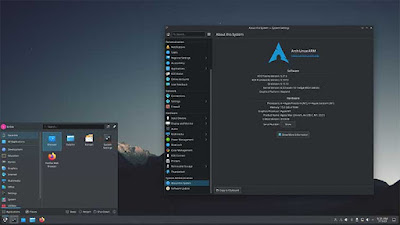



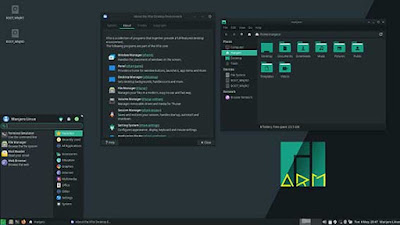




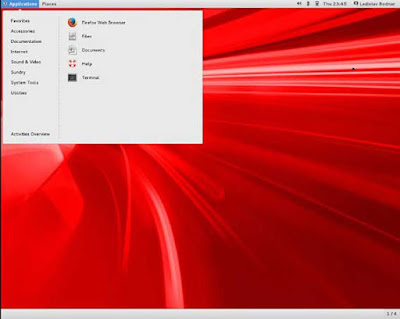




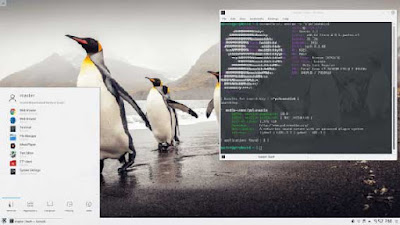








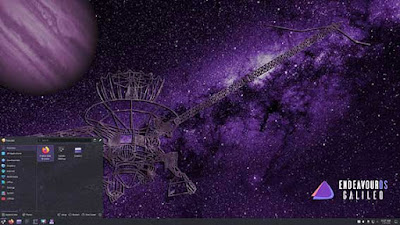




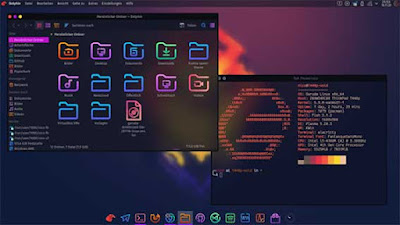


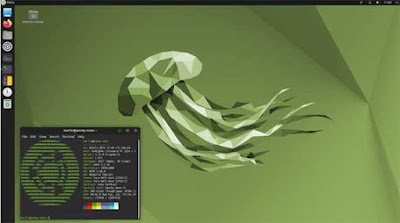

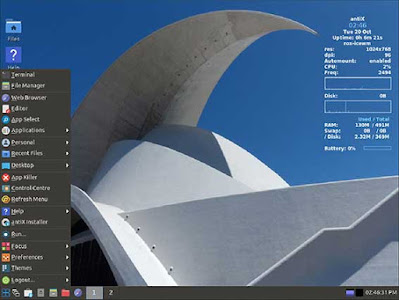
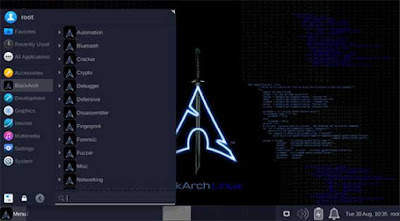











No comments:
Post a Comment